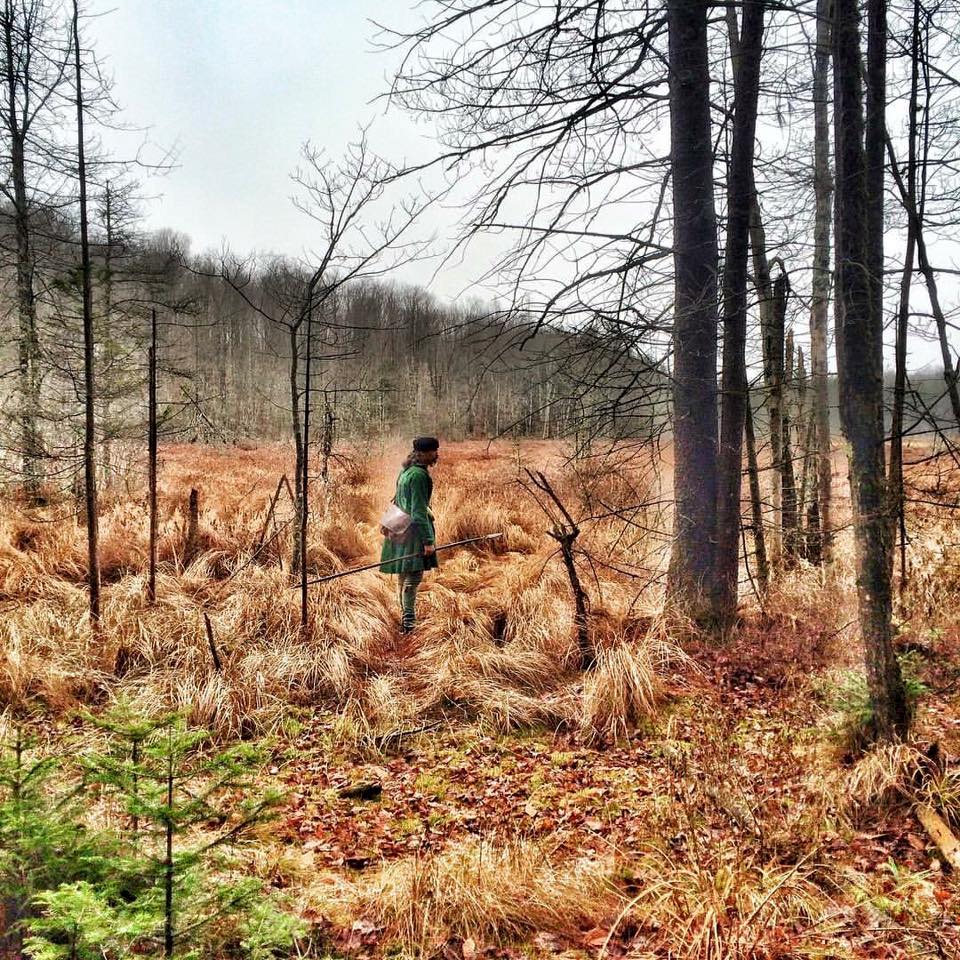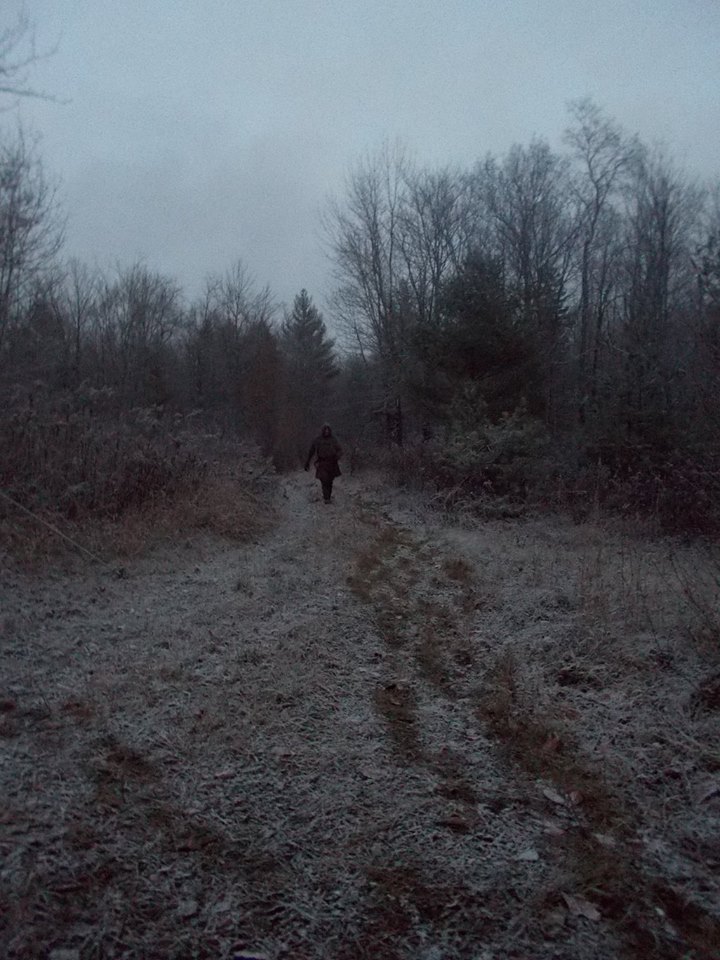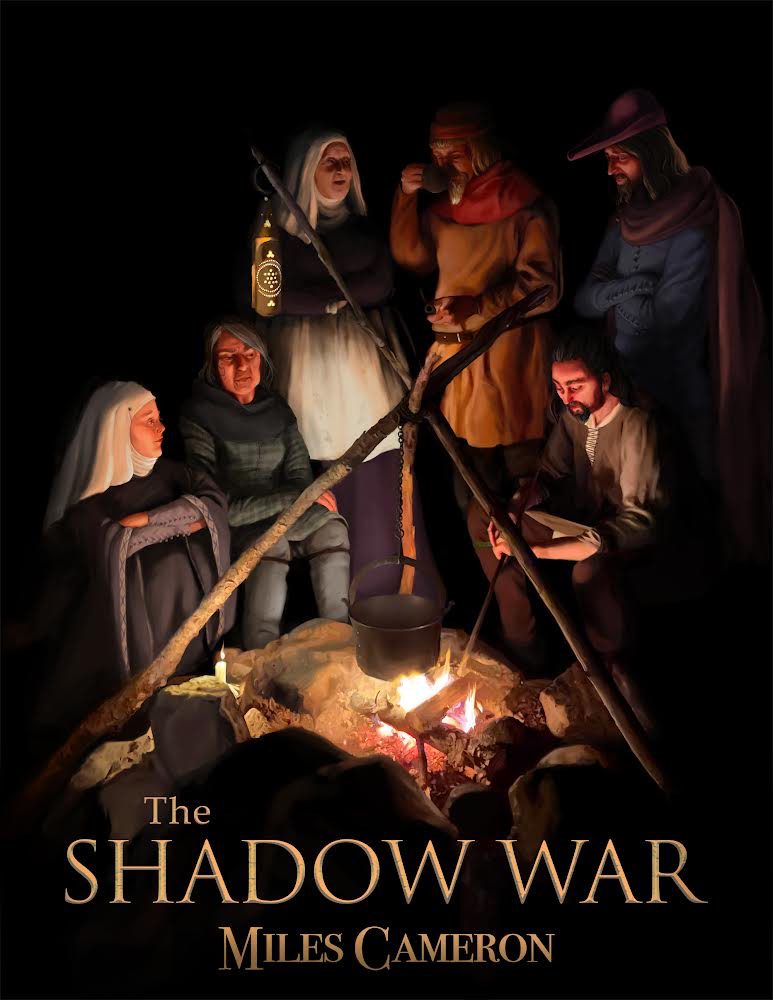
Last weekend, I went to the Adirondacks with two of my favorite camping partners, my wife Sarah and my friend Elisabeth. I was still jet-lagged from Greece, but I wanted to fit in some wilderness after all those ancient sites and tough days at the beach…
In thirty-six hours of relatively civilized life in the woods with good modern equipment, I was reminded of all the problems that face us in the wilderness, and thus, how very complicated the Wild must have been for our foremothers and forefathers.
Which is why, by and large, they didn’t go there. I guess the rest of this blog is really directed at readers and even more so, writers of fantasy, and to a lesser extent, Historical Fiction. I want to discuss some ideas of travel in the wilderness and some expectations and mostly, just lay out some hard facts.
Let me start with some credentials. I have only got extensive wilderness experience in two places; Central Africa (Kenya/Tanzania/Zambia/Congo) and the Adirondack Mountains of New York State. But the differences between those regions ((and they have internal differences as well) are immense, and they bring out my first point…
The Wild is a different place everywhere you go. I have camped in an arid, water-less pine forest in central Africa (no kidding) and in the non-tropical rain forest of the West Canada Creek Wilderness in the Adirondacks. The insects are different, the fish are different, the edible plants are different, the things that will kill you are…
Actually pretty constant. Hypothermia and Dehydration (both of which are frequently and accurately mentioned by Tolkien, for example, in the Hobbit especially) are far, far more dangerous then bears or lions. I mean, OK, a lion is spectacularly dangerous (I have done some stupid crap around lions, but I lived and I don’t recommend it) and a bear is pretty fearsome (and really big) and rhinos…don’t even mention rhinos…
But they are easy to avoid, and frankly, they avoid you too, thanks. You MOSTLY have to go out of your way to find yourself facing an Adirondack black bear or a leopard or what have you, but fail to fill your canteen just one time on a hot day…

Anyway; credentials. Every year I take ten to twenty people into the Adirondacks in various period kit. We do cheat; I am 55 and I carry a linen covered thermarest. I use an 80 liter dry sack to hold food safely and to close it up at night against…well, bears. Bears are real. Otherwise, there we are, in Medieval clothes with Medieval tools and Medieval tents and shelters and Medieval food. This year will be our 25th expedition; we’ll be out nine days. We won’t be on a trail system, or in a camp ground.

Right. So here’s point two.
Food.
Twelve people ( the typical D+D party) consume roughly sixty pounds of food per day. In ten days, that’s six hundred pounds. Or, put another way, every person needs to carry at least five pounds of food for each day. Most strong people can capably carry a total load of 60 pounds; trained men and women may go 80 pounds, and that includes weapons and ammunition and armour and clothes and magic items…
Next point. You can travel, or you can hunt. You cannot hunt and travel. It’s true that a highly trained woodsperson can snare, in the right terrain, and get a couple of rabbits every morning. So let’s say that you can, in fact, hunt and travel with two people. But at some point,t he noise of the group makes any hunting impossible, and as to the idea that a person can ‘go off and hunt’ and ‘rejoin the group’ while traveling in a trackless wilderness…
Laughable. It’s hard enough re-joining people after stopping to have a pee.
And while I’m attacking various fantasy and HisFic memes, let’s look at bows and other weapons. In the woods. (Point 3)

Nothing worse, really. If you haven’t walked in woods with undergrowth carrying a six foot yew bow and twenty livery arrows, you should try it. That quiver (which is not usually on your back) is perhaps the single most annoying piece of kit you’ve ever carried. It’s heavy and it seems to have a life of its own and it catches on everything. And the bow is not particularly fun either. And that heavy arrow for penetrating chain maille isn’t really much use against deer; massive overkill. In Greece or Africa I can see it as practical; in deep woods and undergrowth, what you want, young ranger, is a crossbow. Or maybe a very light, fifty pound bow with light arrows; carry say, three, (total) in your belt, and move like an elf. Of course, you are not engaging in along archery fights with three arrows… The crossbowman carried his bolts much more easily…
The man with a flintlock wins every time, though, as he can carry forty rounds and rest his longe carabine on a log for accurate fire. And use the butt of the thing to cross streams which I don’t recommend with your bow…
The two ideal Medieval weapons in the woods are the axe and the spear. A good light axe is good for everything from Orcs to Anglo-Saxons to wood cutting (of which, more below). A stout spear on a six foot haft is a walking staff with a persuader at the end. I have never faced a bear or lion with a spear; I have faced a very angry, or possibly rabid racoon. No one died, but the racoon didn’t like the spear. The spear also keeps the large animal comfortably far away. Do not try this with a rhino.

Knives and swords… here’s something that you see all the time in the woods; modern men, whether macho deer-hunters or their supposed antithesis, macho hipsters, armed with knives as big as a seax or a short sword. I’m always tempted to ask if they’ve ever used that knife. True confession; in Medieval kit, I carry a very big dagger. It’s true. It cuts bread. And string. And very small kindling. Otherwise it’s just excess weight, but at least it does not catch on stuff. It looks good. That may mean I’m both a macho deer-hunter AND a macho hipster. In the 14th century.

This year on trek, I may wear a sword, as a sort of experimental archaeology. I have worn a long sword in the woods, on a waist belt (the real way, as opposed to on your back, the silly way). It was not that hard; suspension systems of the period are well-designed, and people really wore swords. But the long sword was completely, absolutely useless; it wasn’t even good for cutting bedding. And it was long, and scabbards are expensive and take a real beating in the woods.
Point four is about distance traveled. Carrying weight, I can move about four miles an hour on a trail; faster on a road. But I’m fast. Bushwhacking, that is, moving without a trail, I’m moving perhaps two miles an hour, and if there’s a swamp anywhere (and there always is, unless it’s a desert, and even then, you’d be surprised…) even more slowly. And the energy burn in broken country is incredible; walk a mile in a city or on a road. Then walk the same mile on a ploughed farm field, and finally do the same mile across actual wild country. I’ve seen trained and hardened professionals (soldiers in this case) make as little as four miles in a day, over really bad country.
And then leave time to make camp. One person is pretty easy; around ten people everything from latrines to cooking gets a little more complicated (and don’t even get me started on armies). You need space to camp and time to set up and cook and gather firewood*…

Did I mention gathering firewood? Pretty easy in the Adirondacks, even in a driving rain. Not so easy in a desert, or in central Greece; hard to find anything that you want to cook over on the Savannah of East Africa… But regardless, it’ll take time to find; time to gather, cut to length, and manage. This is one thing that is easier with ten than with one. Fire all night? Nothing for ten. Huge work for one. And cooking? Real cook fires require knowledge and management, because of…
5) Weather…. There are sunny days, but the weather is a far more intimate companion out in the Wild then it is in your home. By intimate, I mean it wants to have its way with you at odd hours of the day and night. Rain, sheets of rain; all day drizzle, high wind, freezing wind, hail, burning sun, sun with high wind, sun with wind carrying gritty sand, snow. Freezing rain, the worst of all. Brutally hot days with plunging temperatures. My favorite? All day rain that clears off at sunset so that the temperature drops and you are left cold. Really cold. Hopefully, you stopped and cut firewood.

Listen. People in the past avoided the Wild like they wished they could avoid war and pestilence. They just didn’t go there. People traveled by going from town to town. If you doubt me, read the opening of Dante’s Inferno. Nor was it different in North America, where most First Nations people traveled by going from town to town, and when they went hunting, were back home at night. Or made large, family-size camps in the good hunting grounds like the Adirondacks, and used them as bases. They didn’t travel across the ‘trackless’ wilderness unless need or war drove them to it, and even then they moved carefully. Same in Africa, which is cross-crossed with a veritable capillary system of tiny trails, as I assume North America once was. And the trails lead to tiny hamlets and villages…
Here’s my point. The Wild is hard enough, without having to fight anyone in it. And the people who cross it or use it are like sailors on a sea; it takes long experience to develop the knowledge to survive in this environment. It is seldom dashing and manly, and often involves patience, careful forethought, and good packing…
And then there’s pack horses…
*And another note on firewood. The best tool with which to cut firewood is the handy saw. Sadly, saws were a high tech item until fairly recently, and I doubt anyone traveling across Mirkwood had a handy folding pocket saw. (However, I’m willing to bet that Thorin Oakenshield would have passed on a magic sword to get a folding Japanese saw; maybe Legolas had one.) The second place tool is not the axe; it’s the standing, live, hardy forked tree. A tree with a deep fork can be used to break even big wood, up to about two inches thick, into fire lengths. Two people can make a lot of standing dead wood into a really big fire in no time, if there’s a nice forked tree growing nearby.) The axe comes in third; it takes a LOT of time and energy to make hardwood into firewood with an axe. But it’s a good reason to practice using the axe; deftness counts, as does strength, and it saves time. And keeps you warm. Which reminds me of another blog.



I’m really curious what you did around lions now.
Excellent points. One thing though is that up until 1800 or so the undergrowth in North America as the First Nations burned the undergrowth every year from Canada to Texas. John Smith reported that when he first got to Virginia it reminded him of a park in England with trees so widely spaced that a horseman could gallop through them. That’s a lot of space. A long bow would be much more useful then. You’re totally right about the swamps though
But burns mean raspberry cane… I agree that the areas around the villages were clear. not sure about the actual Wild. I don’t think European observers could tell the difference… anyway, good point. And would be a useful point in a novel; if the undergrowth is gone, someone did the work 🙂
According to the new scholarship about the precontact peoples of North America there were more of them and they shaped the landscape way more than previously believed. Read 1491 by Charles C Mann for a good summary of recent scholarship.
Your overall point is exactly right though. People didn’t like crossing between towns and cities. That’s exactly what made the era of the wagon train so unique, and the French-Canadian and American Mountain Men so rare is that they did exactly that. The long hunters like Daniel Boone were revered exactly because they did what others were afraid to do, actually crossing the wilderness. Of course all of this has very little to do with anything medieval unless your characters venture onto the steppe or something similar. In fantasy though anything is possible…
There are a number of mistakes in this article. First, you don’t need to pack 60 pounds of food. Your Druid casts Goodberry once a day. 10 people fed. Done. That makes room in packs for spellbooks, a decanter of endless water, and 20 daggers. Next, start the fire with a simple cantrip and let your Unseen Servant gather firewood. As to swords being unwieldy in the woods and “scabbards taking a beating” and all that malarkey, make the sword your Pact Weapon and summon it only when needed. Duh.
In summary, you can’t claim to be an expert in the wilderness and overlook the most basic tactics.
Aw, crap, here come three trolls. Gotta run.
Maybe my fav comment ever.
I never leave home. .or enter the wilderness as a traditional wing adventurer without out me of those bags of infinite holding or portable holes…
I have had some experiences that might provide insight. I have had to move through dense brush on 5 continents, usually with far too much equipment. I got caught up by the aptly named “wait-a-while” vine in Australia, with trios of recurved thorns every foot ot so, and had to take off my pack and a few articles of clothing to get free. As you know, I make my living traipsing to exotic lands and chopping into termite mounds. In Namibia this requires that I move through dense stands of Acacia. I am convinced it is called this because Satan named his favorite bushed alphabetically, from most diabolical to least. Two inch thorns that are fit to crown Christ and go right through boot soles. Through this brush I have to carry a full sized pick axe of roughly the same dimensions as a crossbow. Don’t. I take the head off the handle and carry them separate. As you noted, linearity is your friend. There is a reason that animals that move through brush are streamlined. You will often have to drag something pole-shaped behind you as you move. Another role for a rod or machete, or expensive Hanwei long sword, is to move brush aside so you can sneak past. Note I did not say chop- you don’t chop branches that fall with 2 inch spikes like nature’s morning star. I carry a big skinning knife. It has an oversized synthetic no-slip grip. I dig with it…in mud. I have to slip it into cargo pockets in the brush, or it hangs up constantly. So my final thoughts, streamlining, and be ready to bob and weave like a gymnast avoiding a laser grid. Thus, a spear, or unstrung long bow with arrows held along the shaft. You will see this in jungles from Borneo to Brazil.
Well said Paul.
Good article as usual!
There js a reason why the wilderness and forest are places of threat and danger in fairy tales.. why outlaws go and live there and not be found and why foresters and huntsmen and others of the forest were viewed as they were…
If you are in wild in a historical sense.. whether you enter with time to prepare or not… you are in a survival situation… especially in periods when people lovedloved coder to whatvthat meant… it also highlights that as one is already in a bad situation is can very easily slip in to… worse… for example Roberts return from the saint Francis raid…